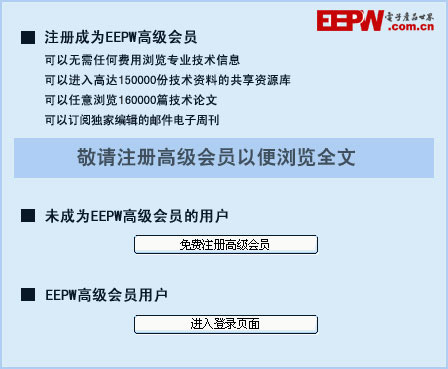CISCO交Q機配置命令大全
Router(config)#access-listaccess-list-number{permit|deny{protocol|protocol-keyword}}{sourcesource-wildcard|any}{destinationdestination-wildcard|any}[protocol-specificoptions][log]
R1(config-router)#distribute-listaccess-list-number|namein[typenumber]
R1(config-router)#distribute-listaccess-list-number|nameout[interface-name]routing-process|autonomous-system-number
94.setsnmp命令選項:
setsnmpcommunity{read-only|ready-write|read-write-all}[community_string]
95.setsnmptrap命令格式如下:
setsnmptrap{enable|disable}[all|moudle|classis|bridge|repeater|auth|vtp|ippermit|vmps|config|entity|stpx]
setsnmptraprvcr_addrrcvr_community
96.啟用SNMPchassis陷阱:
Console>(enable)setsnmptrapenablechassis
97.啟用所有SNMPchassis陷阱:
Console>(enable)setsnmptrapenable
98.禁用SNMPchassis陷阱:
Console>(enable)setsnmptrapdisablechassis
99.給SNMP陷阱接收表加一條記錄:
Console>(enable)setsnmptrap192.122.173.42public
100.showsnmp輸出結果。
101.命令setsnmprmonenable的輸出結果。
102.顯示SPAN信息:
Consile>showspan
4003配置
Enterpassword:
Console>enable
Enterpassword:
Console>(enable)setsystemname4003-ER-F1
Systemnameset.
4003-ER-F1>(enable)setsystemlocation1stFloorEquipmentRoom
Systemlocationset.
4003-ER-F1>(enable)setsystemcontactsysadmin@bigcorp.com
Systemcontactset.
4003-ER-F1>(enable)settime04/30/19999:45:00
FriApr301999,09:45:00
4003-ER-F1>(enable)setpassword
Enteroldpassword:
Enternewpassword:
Retypenewpassword:
Passwordchanged.
4003-ER-F1>(enable)setenablepass
Enteroldpassword:
Enternewpassword:
Retypenewpassword:
Passwordchanged.
4003-ER-F1>(enable)setbannermotd%
4003-ER-F1(Catalyst4003)
AccessRestricted
%
MOTDbannerset
4003-ER-F1>(enable)setinterfacesc010.10.1.20/24
Interfacesc0IPaddressset.
4003-ER-F1>(enable)setiproutedefault10.10.1.1
Routeadded.
4003-ER-F1>(enable)setipdnsserver10.10.10.100
10.10.10.100addedtoDNSservertableasprimaryserver.
4003-ER-F1>(enable)setipdnsdomainbigcorp.com
DefaultDNSdomainnamesettobigcorp.com
4003-ER-F1>(enable)setipdnsenable
DNSisenabled
4003-ER-F1>(enable)setvtpdomainBigCorpmodeclient
VTPdomainBigCorpmodified
4003-ER-F1>(enable)setmodulename1Supervisor
Modulenameset.
4003-ER-F1>(enable)setmodulename2GigUplinks
Modulenameset.
4003-ER-F1>(enable)setportflowcontrol2/1-2sendoff
Ports2/1-2flowcontrolsendadministrationstatussettooff
(portswillnotsendflowcontroltofarend)
4003-ER-F1>(enable)setportflowcontrol2/1-2receiveoff
Ports2/1-2flowcontrolreceiveadministrationstatussettooff
(portswillnotallowfarendtosendflowcontrol)
4003-ER-F1>(enable)setportnegotiation2/1-2enable
Ports2/1-2negotiationenabled
4003-ER-F1>(enable)setportname2/1-2GEC802.1QTrunk
Ports2/1-2nameset.
4003-ER-F1>(enable)setportchannel2/1-2desirable
Port(s)2/1-2channelmodesettodesirable.
4003-ER-F1>(enable)settrunk2/1desirabledot1q
Port(s)2/1-2trunkmodesettodesirable.
Port(s)2/1-2trunktypesettodot1q.
4003-ER-F1>(enable)setmodulename3GigServerLinks
Modulenameset.
4003-ER-F1>(enable)setportname3/1-2CorporateServer
Ports3/1-2nameset.
4003-ER-F1>(enable)setportname3/3DevEngServer
Port3/3nameset.
4003-ER-F1>(enable)setportname3/4QAServer
Port3/4nameset.
4003-ER-F1>(enable)setportflowcontrol3/1-4senddesired
Ports3/1-4flowcontrolsendadministrationstatussettodesired
(portswillsendflowcontroltofarendiffarendsupportsit)
4003-ER-F1>(enable)setportflowcontrol3/1-4receivedesired
Ports3/1-4flowcontrolreceiveadministrationstatussettodesired
(portswillallowfarendtosendflowcontroliffarendsupportsit)
4003-ER-F1>(enable)setportchannel3/1-2off
Port(s)3/1-2channelmodesettooff.
4003-ER-F1>(enable)setportchannel3/3-4off
Port(s)3/3-4channelmodesettooff.
4003-ER-F1>(enable)settrunk3/1-4off
Port(s)3/1-4trunkmodesettooff.
4003-ER-F1>(enable)setspantreeportfast3/1-4enable
Warning:Spantreeportfaststartshouldonlybeenabledonportsconnected
toasinglehost.Connectinghubs,concentrators,switches,bridges,etc.to
afaststartportcancausetemporaryspanningtreeloops.Usewithcaution.
Spantreeports3/1-4faststartenabled.
4003-ER-F1>(enable)setvlan103/1-2
VLAN10modified.
VLAN1modified.
VLANMod/Ports
---------------------------
102/1-2
3/1-2
4003-ER-F1>(enable)setvlan203/3
VLAN20modified.
VLAN1modified.
VLANMod/Ports
---------------------------
202/1-2
3/3
4003-ER-F1>(enable)setvlan403/4
VLAN40modified.
VLAN1modified.
VLANMod/Ports
---------------------------
402/1-2
3/4
4003-ER-F1>(enable)
交換機基礎知識
******************************
第一章園區網概述
園區網特點
1.在一個固定地理區域內的一個公司或一個公司的一部分。
2.擁有該園區網的公司通常也擁有該園區內所用的物理線路。
傳統園區網的主要問題
1.可用性
2.性能
在傳統園區網中,通常用多端口網橋將一個局域網分段成隔離的碰撞域。這樣可解決兩個問題:
1.碰撞域(CollisionDomain)
2.距離限制
網絡中通信的三種形式:單播(Unitcast)、組播(Multicast)、廣播(Broadcast)。
1.多點廣播實例:CiscoIP/TV分發多媒體數據、定位IP服務上的Novell5.
2.提出請求的廣播:IP的地址解析協議(ARP)、NetBIOS的名字請求、網間包交換協議(IPX)尋找最近服務器(GetNearestServer,GNS)請求。
3.發布通告的廣播:IPX服務通告協議(SAP)數據包、路由信息協議(RIP)、內部網關路由選擇協議(IGRP)。
遏制廣播的兩種方法:
1.使用路由器生成多個子網;
2.利用交換機實施VLAN.
當前園區網由兩部分組成:
1.局域網交換機
2.路由器
傳統的80/20規則和新的20/80規則
1.80/20規則:在設計恰當地網絡環境中,一個給定網段上80%的流量是本地的,不超過20%的網絡流量需要通過主干。
2.20/80規則:只有20%的流量是到本地工作組局域網的,而80%的流量需要流出本地網絡。
導致流量模式的改變有兩個因素:
1.基于Web應用的計算普遍,很多PC既是信息的接受者,也是信息的發布者;
2.企業部署集中式的服務器群(既降低成本、提高安全、便于管理)。
新的園區網模型中的3類服務
1.本地服務:本地數據流不進入網絡主干或通過路由器
2.遠程服務:遠程服務數據流穿過廣播域邊界,但可能也可不通過網絡主干
3.企業級服務:放在距離網絡主干很近的一個獨立的子網上
與OSI分層相應的PDU和設備類型
模型層PDU類型設備類型
數據鏈路層(第2層)數據幀交換機/網橋
網絡層(第3層)數據包路由器
傳輸層(第4層)TCP數據分段TCP端口
多層交換機
多層交換基于單獨的流,MLS-SE為MLS流維護一個緩存條目并為每個流存儲統計信息。流中的所有數據包都與緩存中的信息進行比較。
缺省情況下,256秒之后,如果沒有任何流利用到一個MLS緩存項(CacheEntry),那么這個緩存項將從緩存中刪除。
路由器的優勢
決定轉發路徑
驗證3層包頭的完整性、有效期(onheaderonly)
修改TTL
處理并響應任何選項信息
MIB中更新轉發統計數據
安全控制
第3層交換的優勢(路由器沒有)
低成本
低延時
交換機和網橋
第二層交換機由于采用ASIC(專用集成電路,Application-SpecifiedIntegratedCircuits)硬件處理技術,所以交換機可比以太網橋低得多的成本提供高達Gbit速率的可擴展性和低時延。
第三層交換機主要有兩種產品
多層交換
Cisco快速轉發(CEF)
Cisco分層模型中各層使用的主要設備
層次層次名設備
第一層訪問層Catalyst1900,2820,2900,4000,5000
第二層分布層Catalyst5000(支持多層交換,帶路由模塊),2926G(需要外部路由支持)6000(密集Fast或Gigabit以太網口,如120個Gigabit端口)
第三層核心層Catalyst6500,8500(multicastrouting,支持PIM協議)
接入層交換機應用
接入端口數交換機
Lessthan5019xx,2820,29xx(如CAD/CAM和IC設計環境),35xx
Lessthan1004xxx(可提供多達36Gbit以太網端口,96個用戶接入)
Morethan1005xxx(Multigigabit10/100/1000Mbps)
園區兩個基本元素:
1.交換區塊(SwitchingBlock)
2.核心區塊(CoreBlock)
影響交換區大小的主要因素:
1.數據類型和行為;
2.工作組的大小和數量(一般不超過2000個用戶)
說明交換區過大:
1.分布層路由上出現流量瓶頸;
2.廣播和Multicast降低了Switch和Router的處理速度。
分割交換區的原則
1.應基于網絡上通過的流量(TrafficFlow),而不是Blocking中的節點數;
2.為了進行分割,需要定期進行流量采集。
有兩種基本的核心層設計:
1.緊縮核心(Collapsed)
◎分布層和核心層功能由同一個設備執行;
◎每臺接入層交換機到分布層交換機都有一條冗余鏈路;
◎第三層冗余是由運行HSRP的兩臺分布層交換機提供的。
2.雙核心(Dual):在核心層至少有兩個設備提供冗余。但他們之間沒有連接,以防止生成樹循環。
路由選擇協議所支持Blocking的最大數量
協議支持路由對等的最大數量核心層子網數Blocking數
OSPF50225
EIGRP50225
RIP30215
實施第三層核心的好處:
很多設計采用第二層DD第三層DD第二層的模型,取得了成功,但有些情況下需要使用第三層核心,主要好處:
1.快速收斂:路由協議收斂時間5s~10s,而生成樹收斂時間在50s;
2.自動負載均衡:路由協議可在多條等成本路徑間均衡負載;
3.消除對等問題:可以支持更多的SwitchingBlocking,達100個。
壞處:費用和性能。
傳統路由器功能:
_Determinepathsbasedonlogicaladdressing
_Runlayer3checksums(onheaderonly)
_UseTimetoLive(TTL)
_Processandrespondstoanyoptioninformation
_CanupdateSimpleNetworkManagementProtocol(SNMP)managerswithManagementInformationBase(MIB)information
_ProvideSecurity
第三層交換機優點:
_Hardware-basedpacketforwarding
_High-performancepacketswitching
_High-speedscalability
_Lowlatency
_Lowerper-portcost
_Flowaccounting
_Security
_Qualityofservice(QoS)
QualityofService的含義
Messagesaregivenmoreresourcesiftheyneedit.例如電視會議應用比電子郵件可能會得到更多的帶寬。
所以第四層的路由器或交換機可以根據第四層信息來控制流量。一種方法是采用標準的或擴展的訪問控制列表。另一種方法是通過NetFlow交換來提供流的第四層統計。










評論